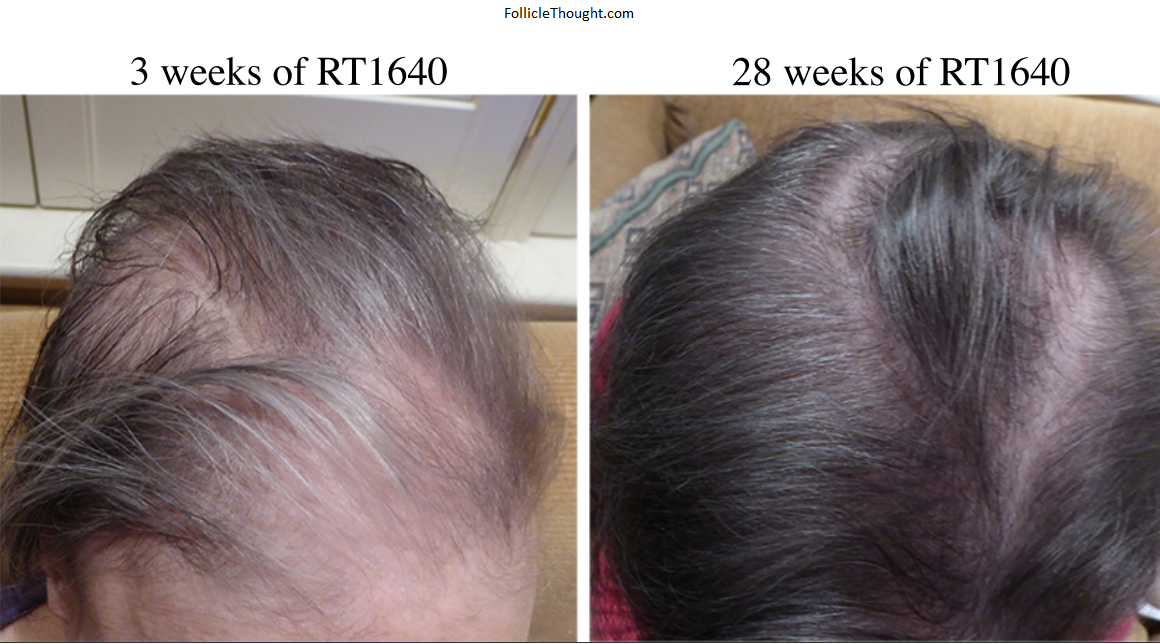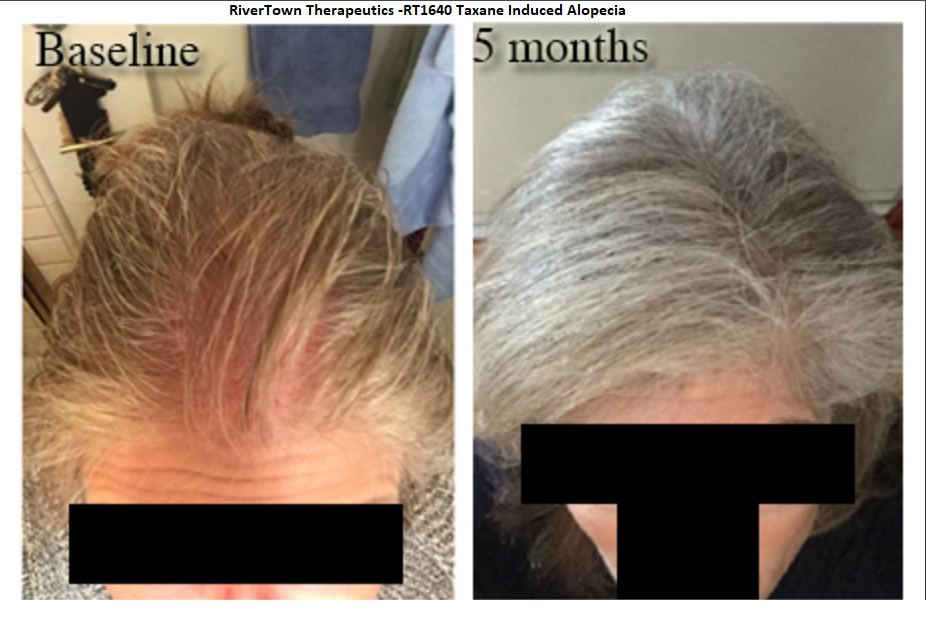Permanent Chemotherapy-Induced Alopecia Reversal
A topic that is rarely covered among hair loss publications is the phenomenon of chemotherapy-induced alopecia and specifically, permanent chemotherapy-induced alopecia.
Chemotherapy and Hair Loss
Around 2 million people may develop breast cancer each year globally, according to the World Cancer Research Fund. For these people who receive a breast cancer diagnosis, one the most common forms of treatment they will receive is a chemotherapy agent known as a taxane. Two of the most widely used taxane drugs are Taxol and Taxotere. A well known side effect which chemotherapy patients experience is loss of hair which can affect both their face and their scalp. It’s less known that out of the different types of chemotherapy used, taxane drugs have a tendency to cause permanent hair loss in the patients that use them. This occurrence may be referred to as permanent chemotherapy-induced alopecia (PCIA) or taxane-induced persisent alopecia (TIPA) in scientific literature. These acronyms are referring to the same thing: hair that does not grow back following treatment of chemotherapy.
For some of the patients experiencing chemotherapy-induced alopecia, hair growth can return naturally following cessation of the chemotherapy, and treatments such as cooling caps and 2% minoxidil can be used to replenish hair growth. Unfortunately, for women who develop the persistent/permanent type of chemotherapy-induced alopecia, there is no known sufficient treatment to regain the lost hair. It is a similar situation to men who have developed late stages of androgenic alopecia in which the hair follicle has become completely miniaturized and ceased to cycle.
Newer Therapies Are Neccessary
Due to the impact on quality of life for these patients, mainly women, who have developed TIPA, there is a glaring need for newer and more effective therapies to treat the disorder. One company with a candidate drug in the hair industry landscape, RiverTown Therapeutics, believes they may have an effective solution to the problem. Their drug, RT1640, is also aimed at treating common hair loss or androgenic alopecia and has shown interesting results.
David Weinstein MD PhD of RiverTown Therapeutics sent over this synopsis on how his drug RT1640 can fit into the demographic of patients who lack a solution to chemotherapy-induced permanent alopecia:
BREAST CANCER TREATMENT INDUCED PERSISTENT ALOPECIA.
There are approximated 250,000 new cases of breast cancer every year in the US, and virtually all of these cases are treated with taxane-based drugs, such as Taxotere®. Of these patients, between 11% and 30% will develop a currently intractable form of alopecia, called taxane-induced persistent alopecia (TIPA) (Namini, J Clin Case Rep 2016). The company plans to apply for Orphan Drug Designation for RT1640 treatment of TIPA. Addressing this unmet need may lead to the FDA designating RT1640 as an orphan drug. The Company has generated anecdotal data demonstrating reversal of TIPA in breast cancer survivors.
Taxane-Induced Alopecia Treatment Results
RiverTown Therapeutics and Dr. Weinstein also provided two case study results of its drug RT1640 in treating two breast cancer survivors who were diagnosed with taxane induced permanent alopecia.
The first case displays regrowth that could be described as very impressive for the type of alopecia known as TIPA. I would estimate this woman’s age to be somewhere in her 50s. There’s a slightly different angle to the photos, however a couple of improvements are easily noted. To start, in the 3 week photo, the part on the left side of the woman’s head is very wide and could even be described as a bald spot. The hair which is combed down at the part is so thin that it virtually lays flat against the side of her head. The left side part in the 28 week photo is much closer to be being a “natural” hair part, it has no gaping hole, and the hair which is combed down is a good deal thicker while maintaining a bounce or curvature above the scalp. Also noted in the 3 week photo is the degree of thinness at the hairline, the frontal scalp section is almost totally see-through. It seems that the hairline in the 28 week photo is just at the bottom line where the photo cuts off. It’s easily detectable that there is more coverage and thicker hair in that whole region. With perfect photos the results would be even more clear. Lastly, the woman’s hair appears to have a slightly darker pigment in the after photos which has been reported with use of the RT1640 drug.
This case study at 5 months is less demonstrative, however coupled with the previous case study it holds merit. The baseline photo shows some thinning in the frontal portion of the scalp, but it also appears to be slightly damp. The result photo at 5 months shows thick hair with no signs of thinning at all. At first glance the difference in hair color in these photos could be seen as a strange factor especially given RT1640’s reputation for restoring some pigment. It turns out that the woman was dyeing her hair at the time the baseline photo was taken.
Based on this data, RT1640 does appear to be a very interesting drug candidate for permanent chemotherapy-induced alopecia. Feel free to share this article with any friends or family who are familiar with PCIA. Please leave feedback in the comments section on these results. I’ve also created a forum thread to discuss these results here. Thank you
Posted in Hair Growth Treatment, RiverTown Therapeutics Inc.




No news for male pattern alopecia.
It still works for male pattern alopecia, it just can work for chemo-induced alopecia as well.
Forum thread here is starting to discuss RT1640 https://folliclethought.com/forum/rivertown-therapeutics-rt1640/14-month-result/
Unfortunately, for women who develop the persistent/permanent type of chemotherapy-induced alopecia, there is no known sufficient treatment to regain the lost hair. It is a similar situation to men who have developed late stages of androgenic alopecia in which the hair follicle has become completely miniaturized and ceased to cycle.
Besides I can’t see any explanation how it treats androgenic alopecia, no photos of androgenic patients before and after treatment.
And it’s useless if your follicles sleeps already.
This page talks about the 3 agents in RT1640 treat androgenic alopecia. https://www.rivertowntherapeutics.com/science
Here are several photos of RT1640 regrowing hair in the bald scalp of a 60 yr old.
https://folliclethought.com/wp-content/uploads/2019/05/birthmarkindicated_FollicleThought.png
https://folliclethought.com/wp-content/uploads/2019/05/closeup_FollicleThought.png
https://folliclethought.com/wp-content/uploads/2019/04/RT-Year.jpg
These photos clearly indicate that RT1640 has the capability to wake up “sleeping” hair follicles.
Hi Admin.
So let’s break down the role of each ingredient.
“One drug promotes the growth and migration of new stem cells, one drug promotes the commitment of the follicular stem cells to become new hair and one protects the dermal papilla from the effects of DHT.”
Cyclosporine-A, just like Way 316606, suppresses SFRP1, thereby freeing the Wnt pathway. So I guess that’s the one that “promotes the growth and migration of new stem cells.”
RT175, in the mouse study, doesn’t lead to any repigmentation on its own, but, when combined with Cyclosporine-A, shows greater repigmentation than the latter does on its own. So I guess this one “promotes the commitment of follicular stem cells.” Great.
Which means that minox must be the one that “protects the dermal papilla from the effects of DHT.”
Wait. What? In what universe does minox protect from DHT?
Come to think of it, why IS minox in here? I’m sure it helps as a growth stimulant. Fair enough. But did Wernstein add it under the impression that it protects against DHT? Is… is he confused? I know I am.
Keep me in the loop if it comes to market.
This is my exact problem, please let me know how I can get RT1640?
Unfortunately, it’s not available at the moment. It just needs enough press coverage to ensure a pharma company would pick it up to start helping the thousands of people who deal with this issue.
How do we do that? Can do we a crowd funding? I am starting to realize that if we want the solution, we have to put more effort instead of waiting.
Very good idea. The funny thing is there is no easy answer I guess unless you are a millionaire or know someone who is. Crowdfunding can work for some companies like HairClone. But I don’t think it will work for RiverTown because they need several million and there is some regulation about how the money can be used towards for-profit companies.
But a question like yours is the first start and I’m glad you’re thinking this way. It only takes humans.
If you have a direct relationship/contact with them – can you ask?
What can the general public do to get this product to the market as soon as possible.
$10.00 from 100,000 is a million dollars right there.
Reading the posts here and other’s, I see that hair loss is a huge issue. I also see that since it sadly “mainly” targets men, it is pushed under the rug.
To quote someone from hairlosstalk “if this impacted women as it did women, we would have had a cute ages ago”.
as it did men***
I’m not sure if the theory about hair loss and women bringing a cure sooner is accurate. Hair is still challenging to create.
I think RT would say the best thing you could do is share it with any rich investors you may know of.
What ideas do you or other have?
the above blog was very helpful they tried and explained each and everything one could, but I would like to add that I was once suffering from hair fall and that was intense then somebody told me about the ayurvedic treatment which was in Indore and then I visited them and the treatment is cow urine therapy and they were so much helpful and they had best ayurvedic medicine to cure many diseases I got mine fixed. hope this answer will help somebody.
Hi Nitesh -what was the ayurvedic treatments and where is Indore? Can you tell me what you used and where you went?
since having taxol some 7 years ago to treat my breast cancer I have had all sorts of issues with my hair. incredibly thin and wispy. bald spots. hair that only grows two inches. I look like a side show freak. my now ex doctor never told me this could happen because guess what? I would have refused the treatment and he wouldn’t have made a million dollars. when it was apparent my hair wasn’t returning, he shrugged as if disfiguring people was all in a day’s work for him. I do not trust the breast cancer industry. if it comes back I will take my chances with the disease
Condolences to your situation Julia
So nothing has happened since this article was published?
Judy, I’m sorry to relay that RiverTown was not able to get funding. Although I wouldn’t say that anything is imminent I think there are other options that hopefully come to fruition. Wish you all the best.